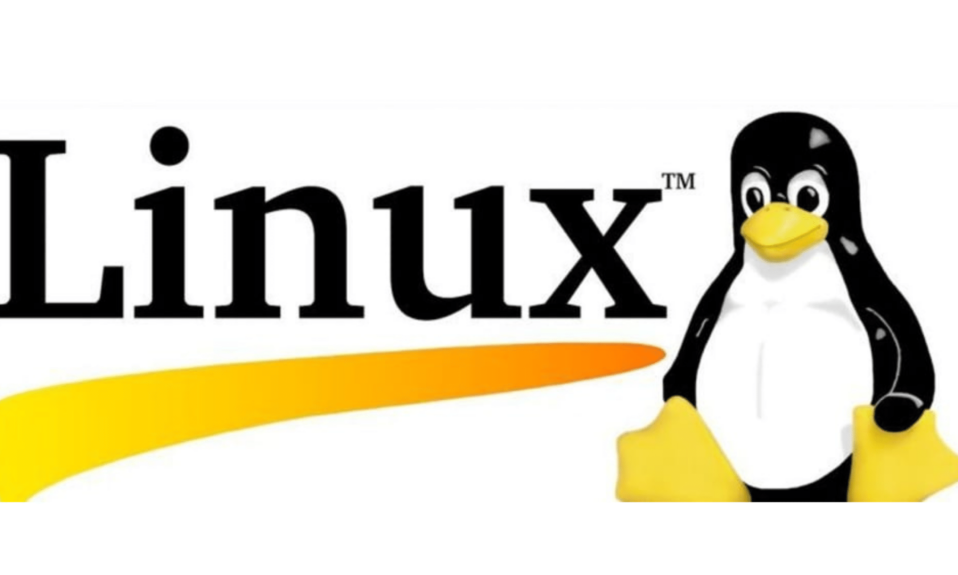
Having second thoughts about your proprietary source software?
Do you need an operating system with a higher level of security?
Perhaps it is time to go with open-source operating system software.
Nowadays, more and more people and companies are choosing Linux and its distributions.
Wondering how many people use Linux?
To give you the answer we have gathered some interesting Linux statistics and facts.
Read on and get informed!
Fascinating Linux facts and statistics
- 76.9% of developers listed Linux as the platform that they preferred to work on in 2020.
- 100% of the top 500 most powerful supercomputers in the world operate on Linux by 2021.
- 90% of all Hollywood special effects are made on Linux.
- 59% of Ubuntu users are English speakers.
- 10.5% of the developer population in 2016 were women.
- Of all desktop OSs tracked, Ubuntu usage alone leaped from 0.27 in March to 1.89 in April 2020.
General Linux Statistics
Linux Usage Facts and Statistics
Perhaps we are living in a Windows-influenced digital world, however, Microsoft’s OS isn’t alone in this field. A surprisingly large number of professionals use Linux to develop new platforms and tools.
In 2021, Linux stats manifest quite an impressive trend. So let’s see the numbers:
- In 2020, 55.9% of all professional developers used Linux.
- 38.3% of all the websites use Linux so far in 2021.
- 94% of Amazon’s EC2 cloud runs on Linux.
- 90% of all Hollywood special effects are made on Linux. All-time favorite “Titanic†is one of the movies with the best special effects made on Linux.
- Approximately 96% of the top 1 million websites are believed to run on Linux-based servers.
- By 2021, 100% of the top 500 most powerful supercomputers in the world operate on Linux.
Around 1.69% of all home desktop computers were using Linux, as of July 2020. In July 2019, the percentage was 1.65% while in July 2010, the adoption rate was only 0.77%.
Currently, only 0.81% of all devices use Linux OS, while Android is the primary operating system with 38.3%.
How many Linux users are there in the world?
Approximately 3 to 3.5 billion people use Linux, one way or another.
It is not easy to define the exact number of Linux users. So, let’s first define the term Linux user.
85% of the market share belongs to Windows when it comes to a desktop operating system, however, every Android phone uses the Linux kernel indirectly. Because scanners, routers, printers, and modems are probably based on a smaller Linux system. The majority of websites are based on Linux as well.
The Most Popular Linux Distros
As you probably know, Linux is not a single operating system, but a wide variety of operating systems based on the Linux kernel. These operating systems are referred to as distributions or distros.
There are approximately 600 Linux distros, even though some of them are no longer in active development.
Ubuntu, Debian, Linux Mint, and Manjaro are a few of the most popular Linux distros among many others.
Ubuntu usage between March 2020 – April 2020 has increased by 7 times.
So, how much are these “7 times� According to the Netmarketshare report on the desktop operating system market share, Ubuntu usage has increased from 0.27% in March 2020 to 1.89% in April 2020.
To put this into perspective, let’s check some numbers on how many computers are there and how many computers are sold each year? As per a Statista report on the number of personal computer units in use, there were over 1.485 billion PCs. The report estimated the numbers to decline to 1.33 billion in 2019.
For the details on the number of computers sold per year, we stumbled upon Gartner’s
report on the number of PCs sold, which claims, over 79.4 million PC units were sold in 2020 last quarter. When you count it for the whole year, it accounts for 275.15 PCs sold.
- The U.S. is the country with the most Ubuntu users in 2021. 115,939 websites in the United States run in Ubuntu.
- Russia is next in line with almost 55,634 websites.
- 59% of people who use Ubuntu are English speakers.
- 5.70% of Ubuntu users are in the Education and Science sector.
- 80% of Ubuntu users do not fancy updating, they would rather choose a clean install.
Linux Demographic Statistics
10.5 % of the developer population in 2016 were women.
- 9% of the Linux kernel Git population are women.
- 3-10% of the Linux kernel merge requests are made by women.
- 5% of Ubuntu’s users are women.
- 70% of Ubuntu users are under the age of 35.
- More than 65.000 developers (91.7%) identify as male, according to Stack Overflow’s 2020 survey.
- Globally, the top 3 countries that prefer Linux are India, Cuba, and Russia.
- In the US, Utah and California are the states that prefer Linux the most.
A survey conducted in 2016, shows that around 10.5% of the developer population were women, which seems relatively low, however, there are many Linux users whose gender is still unknown.
Globally, the number of female developers is lower than that of male developers, however, these Linux users’ statistics might change any time soon. For that reason, free training for women in underrepresented communities to support career development is provided by Linux Foundation. There are more than 100.000 interested women who have taken Massive Online Open Courses (MOOCs).
What’s the Choice of the Game Developers?
As of 2021, over 13.000 Windows games work on Linux. There are over 7.000 games on Steam that run natively in Linux. Steam Proton combines Wine and Steam’s work of improving the playability of Windows games on Linux.
- 10.286 users are registered on GamingOnLinux.
Even though Windows is still the first choice for most gamers, Valve’s Linux-powered Steam OS and other gaming-friendly distros have made Linux a very suitable alternative.
A recent survey shows that less than 1% of Steam users are playing on Linux.
OS Market Share
Global Operating System Market Share
From 2018 to 2021 the Desktop OS Industry growth is projected to average 2% per year.
- Windows had 75.55% of the desktop market share in January 2021.
- Microsoft’s revenue for 2020 was $143.015 billion. It is a 13.65% increase since 2019.
- According to the usage share of operating systems, the current Linux desktop market share is between 1.74-2.18%.
- In 2019, Linux’s desktop market share was estimated to be 2%.
As of 2019, the leader of the desktop OS Industry was Windows with a 78% market share. The second place took MAC OS with 14% Desktop OS market share.
Linux came in third place with 2% Desktop OS market share.
Linux’s percentages have had no drastic changes in the past few years. Perhaps Linux lags behind in personal computers, however, it dominates the world of hosting and powers all supercomputers.
Linux participated in the global server market with a share of 13.6% in 2019.
- In 2019, Windows has a server market share of 72.1%.
- In 2019, the Linux server market share of 13.6% was an increase from the previous year.
With the growing demand for the open-source system, interesting results are expected in the following years.
Let’s take a look at the mobile OS market share.
Mobile Operating Systems Market Share:
Linux kernel runs on 85% of all Smartphones.
- As of March 2021, Android has 40.15% of the mobile operating system market share worldwide.
- Android’s smartphone market share is expected to reach 85.5% in 2022.
- As of March 2021, iOS has 16.45% of the operating system market share worldwide.
- Apple reported revenue of $58 billion for Q2 of 2019. That is a 5% decline from a year ago.
Android maintained its leading position in mobile OS worldwide in January 2021, with a 71.93% market share. Apple iOS and Google Android together possess over 90% of the global market share.
Here we have again a race for market share between the rivals. It seems Android is winning convincingly. As it seems, the market competition isn’t stopping any time soon.
Open-Source Operating Systems Statistics
It is an open-source world: over 87% of the major companies are using open-source software.
As open-source software, Linux is customizable, transparent, and free to use. The latter part makes it especially appealing to both businesses and individual users as well.
Linux has huge community support and many distros to choose from. Some of its distros are great for some users and specific purposes, as uses for Linux are limitless.
Not only companies but many institutions rely on Linux due to its higher level of security. Next, we will discuss more who else adopted Linux?
Who Adopted Linux and Why?
Perhaps you will be quite surprised by the Linux adoption facts. Let’s start with the companies:
- Sony PlayStation 4 runs on Orbis OS – developed on a Linux-based kernel.
- In 2019, IBM acquired Red Hat Enterprise Linux. An IDC report states that Red Hat contributed $10 trillion to the global economy. By the end of 2021, the contribution to the global economy is expected to be $11.5 trillion. By 2023, the revenue is expected to reach $12.3 trillion.
- Every Android smartphone works on the Linux kernel. 75.16% of all smartphones in the world ran on Android in 2018.
Let’s proceed with countries and governments:
- China has its own Linux OS, called Ubuntu Kylin.
- The Russian government uses Astra Linux.
- The Turkish government has been using a Linux-based OS called Pardus since 2005.
- The White House moved to a Red Hat-based OS in 2001.
Governments are adopting Linux because they consider Windows untrustworthy and a spyware tool.
Many military establishments also prefer Linux over another operating system.
- The US Department of Defence adopted Linux in 2007 due to its higher level of security and lighter software.
- In 2013, the French Police switched half of its PCs to Linux, with an intention to switch all 72.000 PCs to Linux in the near future.
- In 2003, the Dutch Police Internet forensics switched to Linux desktops. In 2013, they were already using Ubuntu.
If you thought for a moment that banks do not rely on Linux, you are wrong. Linux has definitely contributed to this field as well.
- The Industrial and Commercial Bank of China adopted Linux in 2005 as a strategy to avoid piracy.
- The Bank of Brazil migrated its servers, desktops, and ATMs to Linux in 2002.
- The Union Bank of California started using a Red Hat-based OS in 2007 in order to lower costs.
Linux is becoming more and more popular in many fields.
Who Contributed to the Linux Kernel?
An increasing number of companies are operating towards developing the Linux kernel.
- 75% of the Linux code is written by programmers working for corporations.
- 1.1% was contributed by Google.
- Red Hat is responsible for 8% of all contributions to the Linux kernel.
- 3.9% of the Linux kernel was contributed by Samsung, in 2006.
Guess who contributes the most to Linux kernel 5.10 development? – It’s Huawei and Intel. Huawei contributed the most by the number of changesets, whereas Intel contributed the most by the number of lines changed.
More specifically, Intel’s contribution is 12.6% (with 96976 lines changed) and 8.0% by the number of changesets.
Huawei’s contribution is 8.9% (with 1434 changesets) and 5.3% (with 41049 lines changed).
Conclusion
At the end of this article, probably you have realized that Linux is everywhere, from smartphones and supercomputers to home appliances.
Besides that, it is the most authentic, secure, and worry-free OS available.
Nevertheless, if you are struggling with your operating system with obstacles such as viruses, slowdowns, and costly repairs, Linux is the perfect platform for you.
So, if you combine reliability with zero costs of entry, you will have the perfect solution for a desktop platform.
.




